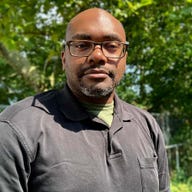GitHub educator: Our biggest mistake, and our opportunity


Moira Hardek, GitHub's senior director of education, thinks building a diverse tech workforce starts by engaging children early and easing them in to coding with the discipline's foundational concepts.
As GitHub's senior director of education, Moira Hardek identifies ideas and strategies to make students feel excited about and connected to the world of computer science and coding.
GitHub recently announced that teachers who join GitHub's Global Campus and use GitHub Classroom now get free access to Codespaces, GitHub's integrated development environment. In addition, GitHub also announced plans to host two in-person graduation events this month.
Moira Hardek
Hardek said about 1.9 million students are active in the GitHub Education platform.
"What is particularly game-changing about Codespaces in the education space is how the development environment is set up," said Hardek. "So for anybody that has ever tried to code as either a student or tried to teach, setting up that development environment can take minutes, it can take hours, it can completely derail someone's experience in computer science and turn them around just to get into the place where then you start writing the syntax."
In a recent conversation with ZDNet, Moira talked about what got her interested in tech, opportunities to introduce tech education experiences to students, the sense of community within GitHub, and misconceptions and opportunities in tech education.
Below is our interview. It has been condensed and edited.
What opened the door to making a career in technology?
Moira Hardek: I've always been surrounded by strong female role models. Actually, my high school that I went to was the world's largest all-girls Catholic high school. So you can imagine I had a lot of empowerment but was very surprised and disappointed when I walked into the industry and it looked a lot different than the real positive message that I got.
So early in my career, I realized a lot of times I was the only woman in the room when it came to technical work, and I also actually worked a lot on the services side of technology. As I looked around the room, as I looked around at my experiences that weren't so great, I wanted to change what the room looked like, and I wanted to focus on diversity. So I started to drift this way into education.
Moving from a corporate job to a tech education advocate
MH: When I went to go work for Best Buy, the world's largest consumer electronics retailer at the time, we had some really brilliant leaders. There was a very innovative CEO back then by the name of Brad Anderson. I'm still a big fan of his.
I thought his approach — and no one really thinks about this in consumer electronics — it was really more anthropological. He always talked about our consumers, and our users, and our impact on their lives. And that really helped shape me at a younger stage.
I went to our CEO, and said "I really want to work on the diversity in our services and technology area." And wouldn't you know it, they backed me up and they said "OK great. We're going to give you some resources to go help bring a more diverse workforce."
I kind of shot myself in the foot there because, if I remember correctly, when I was in college, I was like one of three girls in my computer science class. So when I started going to colleges looking for women to come work in technology, there were just as few there as when I was in school.
And that's when I really realized is we've got to go way farther down the pipeline and start changing these perceptions about computer science and who it is and is not for very early in elementary school and high school, through college.
What's a good way to help kids see themselves in tech?
MH: The one thing that has always baffled me about how we teach technology is we start at coding a lot. … I like to ask this question of every developer I work with: "Hey, could you do any of this stuff that you do today if you didn't know what FTP was?" And they're like "No."
And I [ask] "Could you do any of the work today if you didn't know how your files and your subdirectories [work]?"
And then you look around and you ask, "Where are we teaching these fundamentals and these basics to our students?" And we don't do that anywhere else. In math, we don't jump into long division, we start with numbers. And then counting, and then addition and then subtraction.
Coding is long division. And there's so much that comes before that. The vernacular, the basics of hardware. And to be honest, these are not the most exciting topics. Those of us that are educators have a real challenge to make it engaging and fun. But I think there's a lot that comes before coding.
And yes, we're accidentally discouraging and turning students around very early by starting them with maybe a too-advanced topic.
Misconceptions about technology education and careers
MH: I actually like to make the comparison of it's now kind of like going into med school. And our job is we have the year one med students. So you need to learn the fundamentals of the body … but after that, you start to go into your specialties. Are you going to be a cardiologist, are you going to be an oncologist?
And the same thing happens in tech. Are you going to go Full Stack, are you going to go front end, are you cybersecurity, are you a data architect?
Treating computer science just like it's just one solid block of content and topic, I think, has been one of the biggest mistakes, in general, the education community has made in teaching computer science.
The value of building community in computer science
MH: When we put a community together and we start talking to each other, that's where we really start to demystify all of these pieces. And I think the community is where we find both our questions and our solutions.
We obviously live in an incredibly virtual digital world, and particularly with things like Global Campus and Codespaces, it's all about accessibility. Everybody can have access, whether you're on your own device or not.
When the pandemic first started, initially there were a lot of levers that we had to pull — that we were very blessed that we had — to keep the community as connected and together as we could during a pandemic with all of these physical barriers.
But of course, at some point, we're human beings. We crave contact, we crave a connection beyond the digital … you could feel the stress and you could feel the strain, but what came out of it was magical, it was how everybody leaned on each other for support. How suddenly humanity overrode everything else and we were all in this together, globally.
And we saw that at the very first virtual graduation that GitHub education ever ran in 2020. And now it has become a staple of what we do, and it is probably I think the most beautiful example of our community that you can see in one place.
Now what's really interesting about this is the very first year that we ran this we discovered that over one-third of the pull requests that were submitted [to request inclusion in the graduation] were a student's first pull request. So the graduation motivated students to learn a very advanced skill.
SEE: How to build a coding portfolio
Merging a pull request at GitHub is one of the most serious accomplishments, that big first step you can take. And we found that events like [graduation] give our students the courage, and the confidence to step forward and try new things inside of the platform.
But then what made it even more magical, was that the students, particularly the ones that made these first-time pull requests, other students were helping fix the pull requests of the students who were doing it for the first time. It didn't matter what region they were from. This was happening globally around the world.
This year, in 2022, when we put out the original repository with the opening brief, it was written in English. And the students started translating the brief to be able to share. It has now been translated into 22 different languages to make sure that as many students as possible have access to virtual graduation, and that was all done by the students themselves for their community.